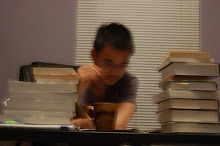I have been reducing my investment position in fine wines, particularly recent Bordeaux and Burgundy, which turned out to be my best investment in the first half of 08. Fine wine hardly qualifies a value investment and is made to be drunk and enjoyed. Its value is determined by the perceive pleasure, which varies dramatically among people. I have been enjoying fine wines for some years, but I jumped heavily into the market as an investment only after I sensed a self-reinforced upward trend in wine price couple years ago.
My theory was: A rapid wealth accumulation of high net worth class in emerging markets (China, India and some resource rich countries) and their desire of western lifestyle initially created new demand for high end wines (>$100/bottle). As those wines are produced from traditional region, where land designated to produce the wines is fixed, the rising demand drives up the price. In the second stage, as the premium of the marginal quality of the wine rises rapidly, wineries can afford more stringent grape selection to increase their quality to achieve higher pricing, which actually reduce the supply of their wines. Thus drives price even higher. As the demand of wine from emerging markets is based on perceived social status of drinking expensive wines, higher price and increased scarcity of the high end wines in fact attracted more demand. Thus a self-reinforcing cycle is established. The price of ultra premium wines,like Lafite, Latour, or Romanee Conti, went through the roof. The upward trend in price is propelled by another two forces. The ample liquidity in the financial market and rising wine price attracted investment money into the wine market. Several hedge funds specialized in fine wine investing were established during the past several years. This creates "false" demand in the market, because wines bought by the investment fund will eventually appear on the market as new supply. When viewed as an investment rather than consumable, the criteria valuing fine wines is dramatically changed. The price ceiling for the top wines disappeared. The newly released sought after Romanee Conti is priced at $14K or several hundred dollars for every sip. Secondly, not only the wineries that benefited from this trend, wine distributors and wine critics are also enjoying explosive demand for their service. Soon the "must have" "vintage of the century" appeared on every wine relative publication. Just like the hyped 1972 vintage that hit the market at the top of financial market peak, 2005 vintage in both Bordeaux and Burgundy are touted by every major wine critics. The price appreciation of my 2005 Bordeaux purchase is 100-150%. The smaller production burgundy wine is the extreme case of this wine mania. The price of various sought after wines purchased as future jumped several folds when the wine physically hit the market. Due to the asymmetry of information in the wine market, I was able to sell some of my 2005 Romanee Conti wines 2 or 3 times higher right after I made my purchase.
The market is cooling. The fist blow is that Robert Parker, the most influential wine critics, published his assessment of 2005 Bordeaux somewhat below market's inflated expectation. Financial market crisis leads to exit of some institutional players. Although pricing is still firm, as demand from Asia is still firm, the inventory starts to build up in the first and second quarter of 08. The quality of 2006 and 2007 vintages are not praised and the enthusiasm of wine buyers disappears. The self-reinforcing cycle is broken.
An interesting example of bubble and bust for educational purpose.
Wednesday, July 30, 2008
Subscribe to:
Post Comments (Atom)




No comments:
Post a Comment